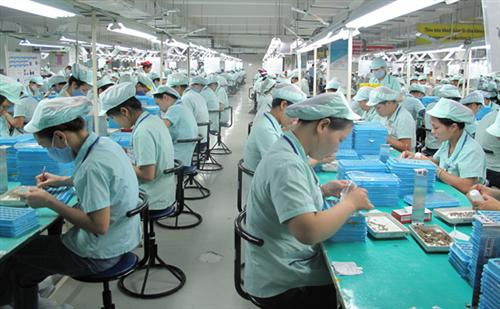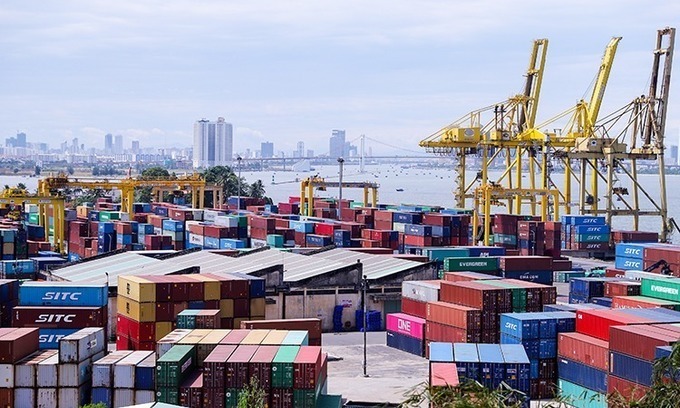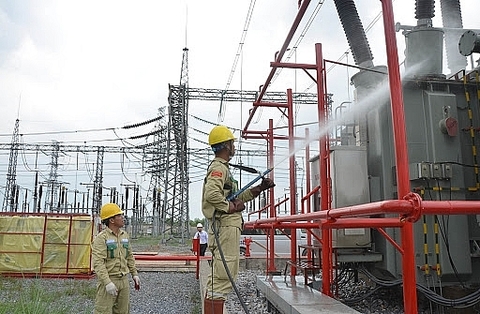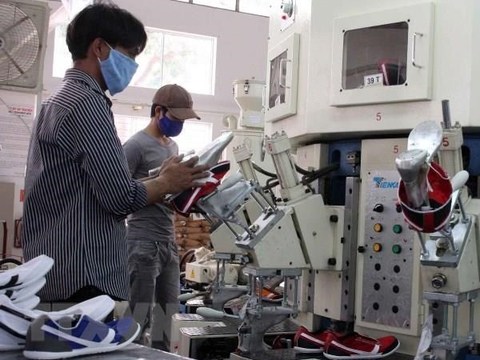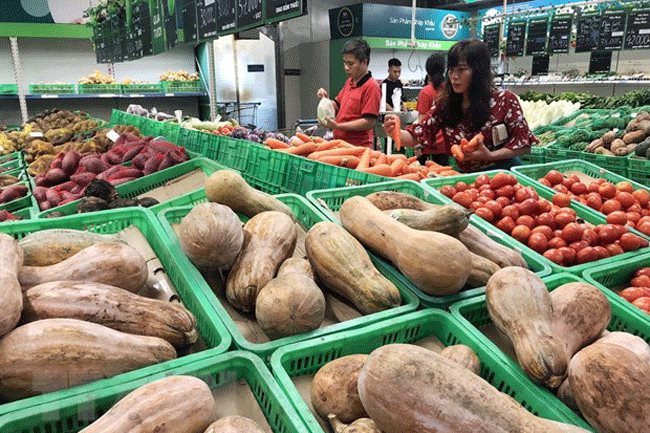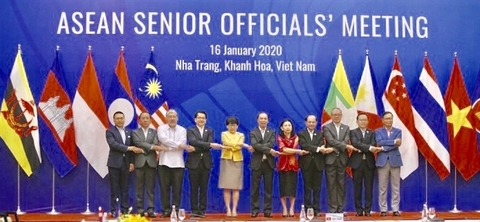Extracting the maximum value from business performances
Extracting the maximum value from business performances
The Vietnamese economy has grown by 7.02 per cent in 2019, and is expected to maintain this growth momentum into 2020. Nguyen Minh Cuong, principal country economist at the Asian Development Bank in Vietnam, sat down with VIR’s Thanh Tung to talk about the country’s economic outlook and what it should do to support domestic enterprises’ performance for heightened economic growth, as well as the links between foreign-invested enterprises and their domestic counterparts in the economy.Recently, the Asian Development Bank (ADB) raised its projection for Vietnam’s economic growth in 2020 to 6.8 per cent. What is the reason, and what are your expectations about the economy’s prospects?
The Vietnamese economy has continued its strong performance in 2019 with the economic growth at 7.02 per cent, which was quite exceptional amid the slowdown of the global and regional economy. Economic growth in 2019 was boosted by a robust domestic consumption from the growing middle-income class. The domestic consumption is seen to continue to fuel economic growth in 2020.
The robust influx of foreign direct investment (FDI), especially those associated with the manufacturing sector, substantially added to economic growth. Strong political commitment and relentless efforts by the government to reform the domestic business climate have made Vietnam one of the most attractive investment destinations, with a rise in FDI, which sat at $38 billion in newly-registered, newly-added, and stake-acquisition capital and $20.4 billion in disbursement.
Increasing FDI inflows, including from China, partly due to the investment diversion impact of the US-China trade war and a surge in mergers and acquisitions, have also given a major push for economic growth. These drivers for FDI are forecast to continue in 2020.
Furthermore, the expansion of market access and trade diversion impact from the US-China trade war have significantly boosted Vietnam’s trade. The country has reaped a record export-import turnover of $517 billion in 2019.
In 2020, the EU-Vietnam Free Trade Agreement is expected to take effect, in addition to the continued implementation of many other FTAs including the Comprehensive and Progressive Agreement for Trans-Pacific Partnership, and will help expand Vietnam’s export markets. The further expansion of the export market is also expected with the potential signing of the Regional Comprehensive Economic Partnership when Vietnam hosts the ASEAN Summit and related summits in 2020.
Macro-economic stability has enabled the strong economic performance in 2019, and the exchange rate was stable. Inflation was controlled at 2.79 per cent, much below the 4 per cent target. The low inflation has allowed Vietnam to ease monetary policy to inject liquidity to spur growth.
Additional credit for the economy was also provided through the improvement of disbursement of public investment.
With all of these reasons, the economy grew over 7 per cent, exceeding expectations, and higher than the target of 6.8 per cent set by the National Assembly. And this will also lay a firm groundwork for Vietnam to realise a bright outlook for 2020.
So what challenges do you see for the Vietnamese economy in the upcoming year?
In 2020, despite the initial relief from US-China trade negotiations, the uncertainty from the trade war will still cast a gloomy prospect for the global trade environment.
Although there have been some signs of stabilisation in the fourth quarter of 2019, major economies will not be able to revive their growth quickly in 2020. The moderate global growth and the extension of global trade declines will affect Vietnam’s growth, including the country’s overall trade balance.
Moreover, under various FTAs, Vietnam will have to open its markets, meaning it will have to phase out both tariffs and some non-tariff measures, leading to a possible increase of imports.
If the USD continues its weakening in 2020, and VND strengthens due to strong economic fundamentals, especially increasing FDI, and remittances, it may also expand imports to Vietnam, consequently narrowing the trade surplus.
The volatile global oil market and the increasing food prices resulted from the severe and on-going droughts, and the 2019 African swine fever may be major downside risks to the Vietnamese economy that may edge up inflationary pressure.
One of the biggest challenges for the economy is to accomplish its unfinished structural reforms in various areas, including how to create a fairer and more transparent playing field for enterprises from all economic sectors to partake in.
For example, the government must accelerate the state-owned enterprise (SOE) equitisation and divestment to provide more space for private enterprises, including household businesses, to play.
The ADB has urged the government to boost SOE equitisation and divestment in recent times. What is your view about the efforts made thus far by Vietnam?
SOE reform has achieved significant outcomes in past years. Vietnam has accelerated both its equitisation and divestment programme – it also established the Commission for Management of State Capital in Enterprises (CMSC) to manage state capital and assets of 19 state economic groups and corporations.
However, the progress is still much below expectations. SOE equitisation in Vietnam remains slow, though the government has over the past few years been trying to boost it. The government targeted the equitisation of 127 SOEs during 2017-2020. By end of May 2019, however, only 34 SOEs were equitised, representing only 27 per cent of the plan.
The limited amount of state capital sold to genuine private investors has prevented the government from achieving the core goal of equitisation, which is to relocate state resources to more efficient sectors.
One of the major bottlenecks is the regulatory framework for SOE reforms. For successful equitisation, it would need technically competent and sectorally coherent policies and regulations in dealing with highly technical areas such as bankruptcy, assets valuation, and resolution of non-performing loans, to cross-cutting issues such as land tenure and acquisition, ownership, and corporate governance.
Capacity constraints are also causing the delay of SOE reforms. Management in many groups and corporations has limitations in terms of skills and capacity to undertake the strategic and operational restructuring needed, and the CMSC may not have these capacities yet, particularly in the beginning. Moreover, the reporting lines between the CMSC and the SOEs’ line ministries are still evolving.
SOE equitisation is often associated with the attraction of FDI. What are you expecting from the FDI landscape in Vietnam in 2020?
Vietnam has become one of the most attractive investment destinations. FDI into the country is expected to continue increasing because of the country’s economic potential, improved business climate, and market expansion from various FTAs.
Vietnam is proactively changing its economic structure. According to the Ministry of Planning and Investment, with the contribution of FDI, the shifting from a natural resources dependent economy to a more manufacturing, processing, and services-driven economy has been expedited, creating greater value addition to products and services.
From 2016 to 2018, the ratio of enterprises in the manufacturing and processing sector increased 40 per cent, and the ratio climbed 56.6 per cent in the scientific and technological sector, compared to the 2011-2015 period.
FDI can be seen in almost all sectors. Especially, the sources are diverse, coming from multiple nations and territories, and not depending on any single market or any group of markets.
There will also be challenges for Vietnam in FDI attraction in the next 12 months. The existing link between foreign-invested enterprises (FIEs) and domestic ones remains quite lax. Also, FDI quality remains limited, and the country has wooed a few large-scale investors like Samsung, Intel, and LG. However, whether the country can be transferred original technologies from these investors remains a question. It is, therefore, important for Vietnam to attract and prioritise FIEs with cutting-edge technologies. Measures to encourage FIEs to transfer technology to Vietnamese partners may also be considered.
Institutional, capacity, and infrastructure bottlenecks are also critical challenges to foreign investors and need to be addressed.
What do you think about the links between Vietnamese businesses and FIEs in global value chains (GVCs)?
The country’s private enterprises, notably small- and medium-sized enterprises (SMEs), contributing nearly half of GDP, find it hard to partake in the country’s integration with GVCs. There are four main factors that constraint the participation of SMEs in GVCs.
First, SMEs have weak capability to ensure quality and reliability of product and services, standards, and certification. Second, limited access to finance remains a significant binding constraint. Third, institutional co-ordination and enforcement of existing regulations are also seen as major barriers to SME’s integration with the GVCs. And lastly, there is a lack of large domestic private enterprises which can lead SMEs in the integration with the GVCs.
Against this background, priority policy measures should therefore focus on strengthening the capability of SMEs, especially in product quality and reliability, managerial competency, skilled labour, innovation and technology. Also, focus should be laid on enabling the evolution of medium-enterprises into big domestic private enterprises.
We see that about 97 per cent of enterprises are privately-owned SMEs. Currently the country is considering the private sector, including SMEs, as an important pillar for economic growth. What is your take on this?
The private sector is generating millions of jobs. So it has been playing a major role in economic growth and ensuring social security. SMEs boast great potential for development. The government had set a target of creating about one million enterprises in 2020.
It would be very good if this target is reached, but the most important thing is to achieve the efficiency and competitiveness of them, by providing them with greater access to markets and finance, better governance and skills, more efficient infrastructure, and more transparent regulatory frameworks.
In addition to SMEs, there are also millions of household businesses in Vietnam, making significant contribution to job creation and GDP. Appropriate policy measures to facilitate the development of household businesses and ensure a level playing field for them are also critical to sustain the economic growth.




